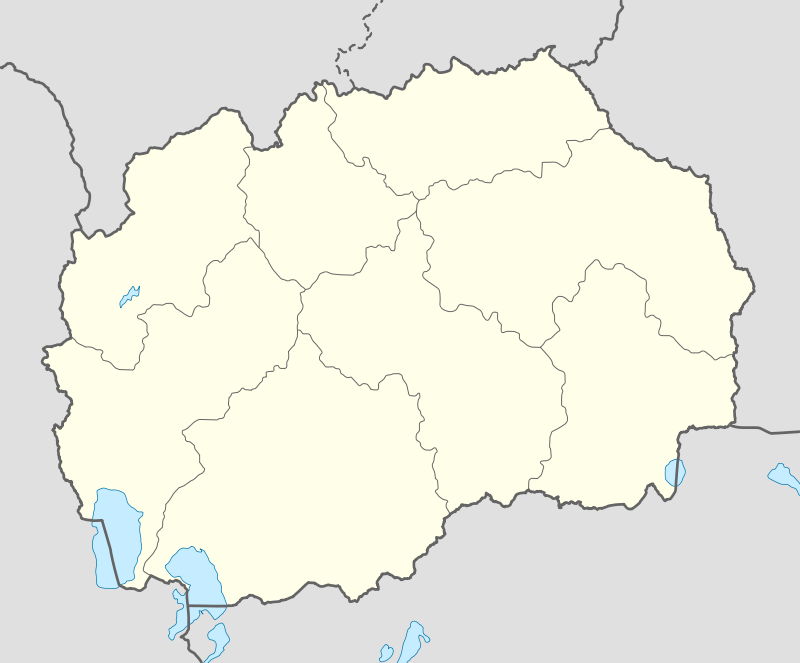Pesočani
| Pesočani | |
|---|---|
| Village | |
| Песочани | |
 Pesočani Location within Republic of Macedonia | |
| Coordinates: 41°19′35″N 20°47′30″E / 41.32639°N 20.79167°ECoordinates: 41°19′35″N 20°47′30″E / 41.32639°N 20.79167°E | |
| Country | Republic of Macedonia |
| Municipality | Debarca municipality |
| Statistical region | Southwestern Statistical Region |
| Population (2002) | |
| • Total | 95 |
| Time zone | UTC+1 (CET) |
| • Summer (DST) | UTC+2 (CEST) |
| Car plates | OH |
| Website | . |
Pesočani (Macedonian: Песочани, Albanian: Pesoçan) is a village in the municipality of Debarca, Republic of Macedonia.
History
Pesočani during the Ottoman period was a village inhabited by Muslim Albanians until the onset of the Balkan Wars (1912-1913).[1] In 1918 Pesočani was razed and Albanians fled to nearby villages such as Radolišta where the families of descendants are known by the village name of Pesoçan.[2] Between 1912 and 1918 the village was destroyed and thereafter two new settlements were founded in its place: Novo Selo and Novo Aleksandrovo (both today became modern Pesočani).[1] Pesočani was resettled with a Macedonian population.[1]
Demographics
According to the 2002 census, the village had a total of 95 inhabitants.[3] Ethnic groups in the village include:[3]
- Macedonians 95
References
- 1 2 3 Włodzimierz, Pianka (1970). Toponomastikata na Ohridsko-Prespanskiot bazen. Institut za makedonski jazik "Krste Misirkov". p. 86. "Во турско време постоело едно албанско село - Песочани, со 360 жители во 1900 год., но во год. 1912-1918 тоа опустошело и на неговото земјиште биле основани две нови села: Ново Село и Ново Александрово (сега такво име не постои). Потоа с. Песочани пак се населило, но веќе со Македонци." p. 89. "Песочани било мусл. алб. село (Хан: 30 куќи, К'нчов: 360 жит.) до балканските војни."
- ↑ Murtishi, Kaim (2001). Ladorishti: Histori dhe Tradita. Asdreni. p. 86. "Fisi Pesoçan. Është një fis i vogël që numëron tre familje, të shpërngulura në Ladorisht, që në vitin 1918 kur u dogj fshati Pesoçan."
- 1 2 Macedonian Census (2002), Book 5 - Total population according to the Ethnic Affiliation, Mother Tongue and Religion, The State Statistical Office, Skopje, 2002, p. 67.
External links
| Wikimedia Commons has media related to Pesocani. |